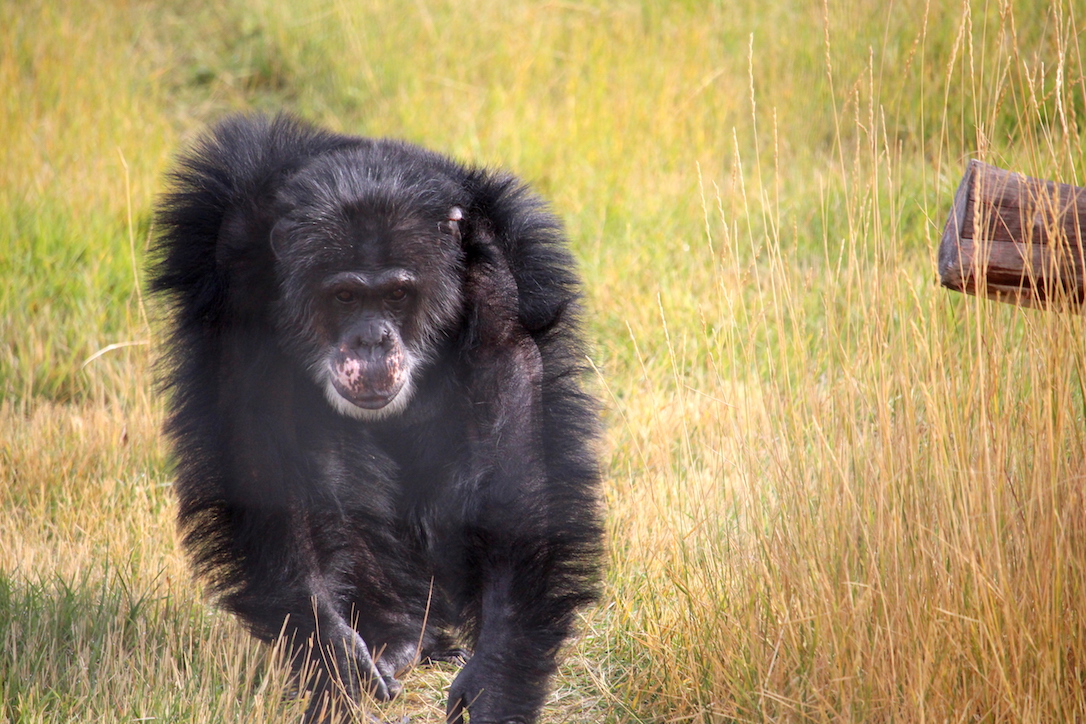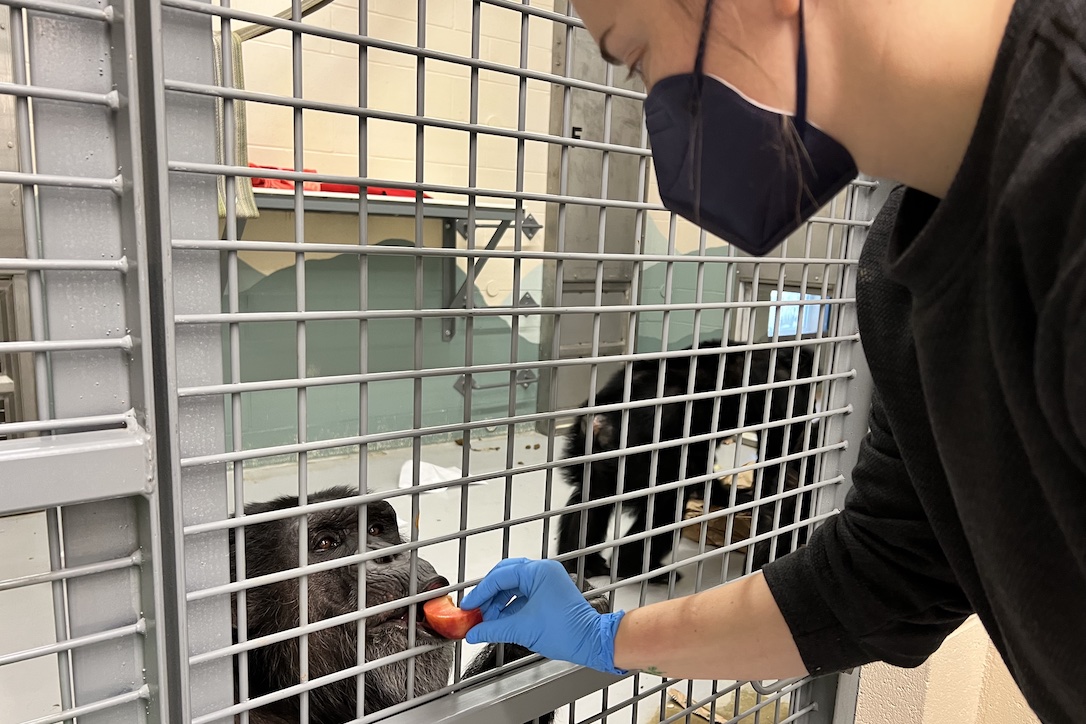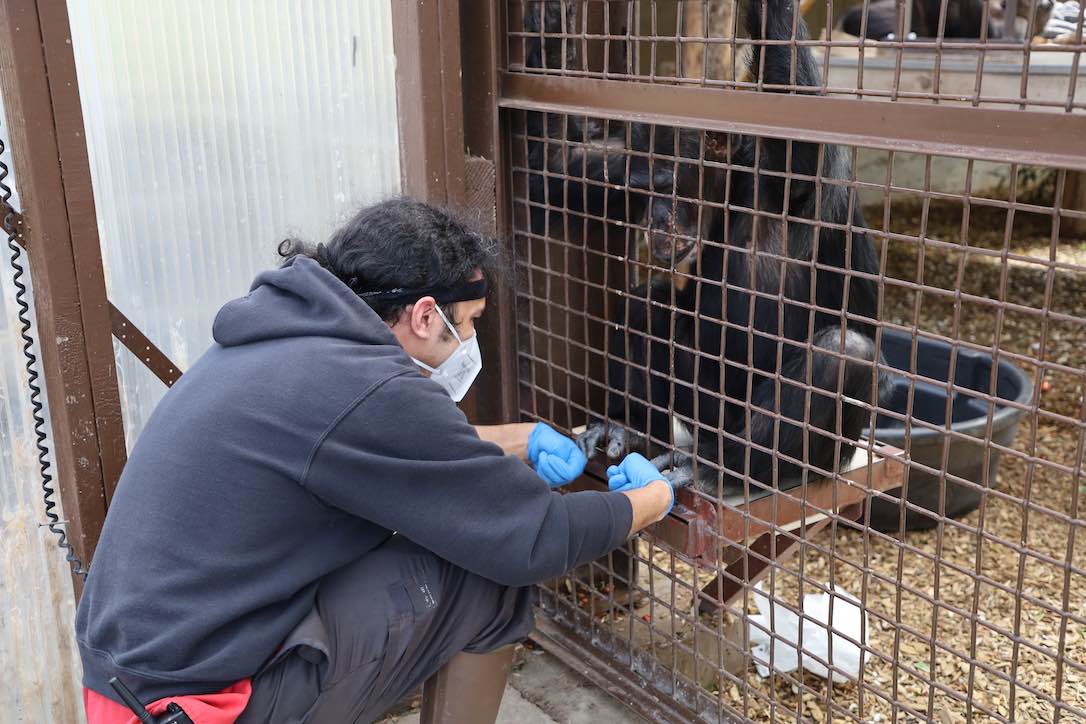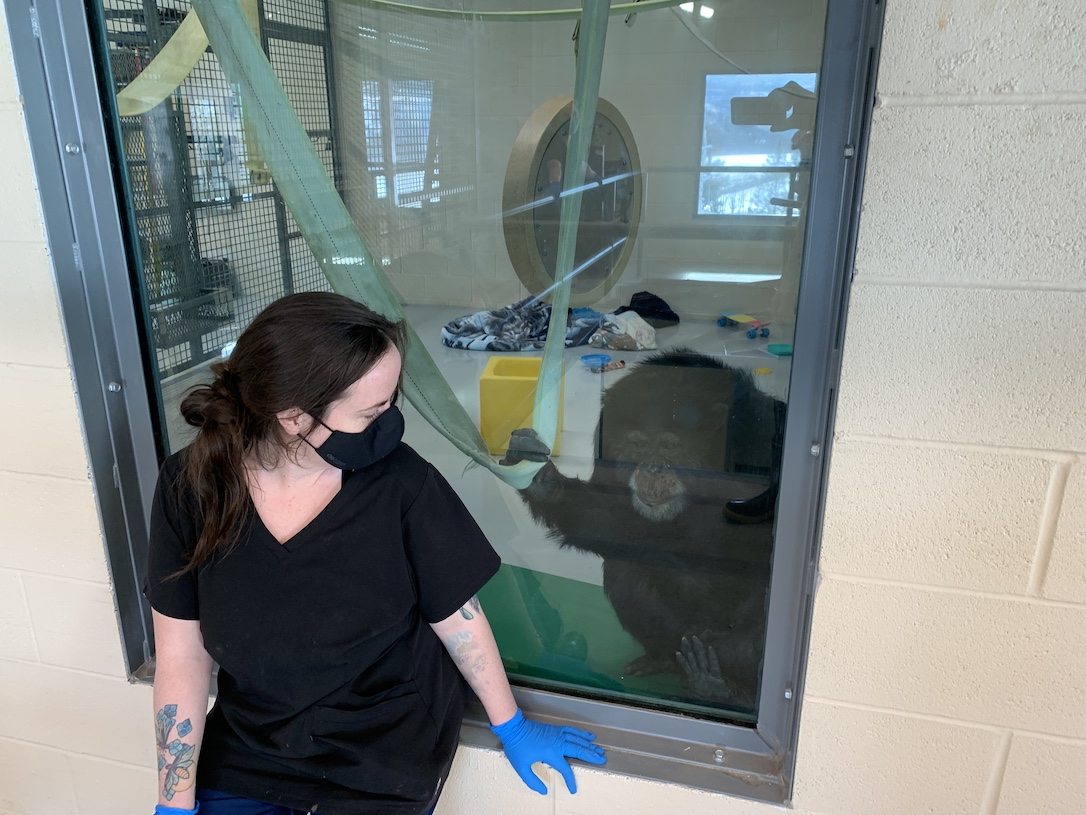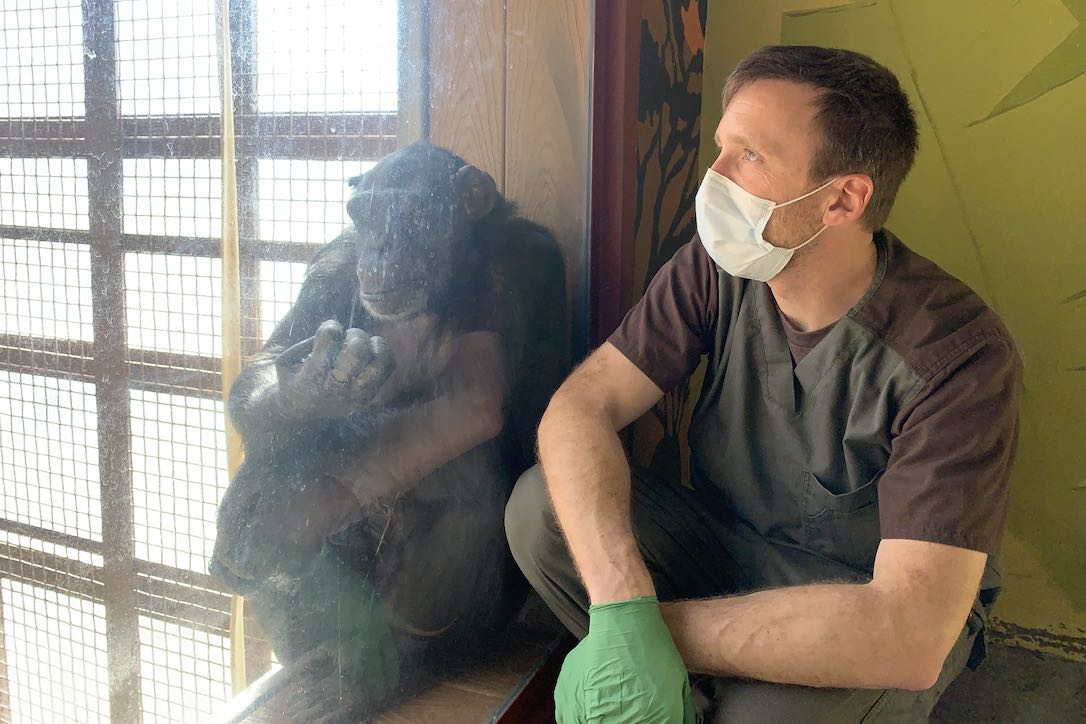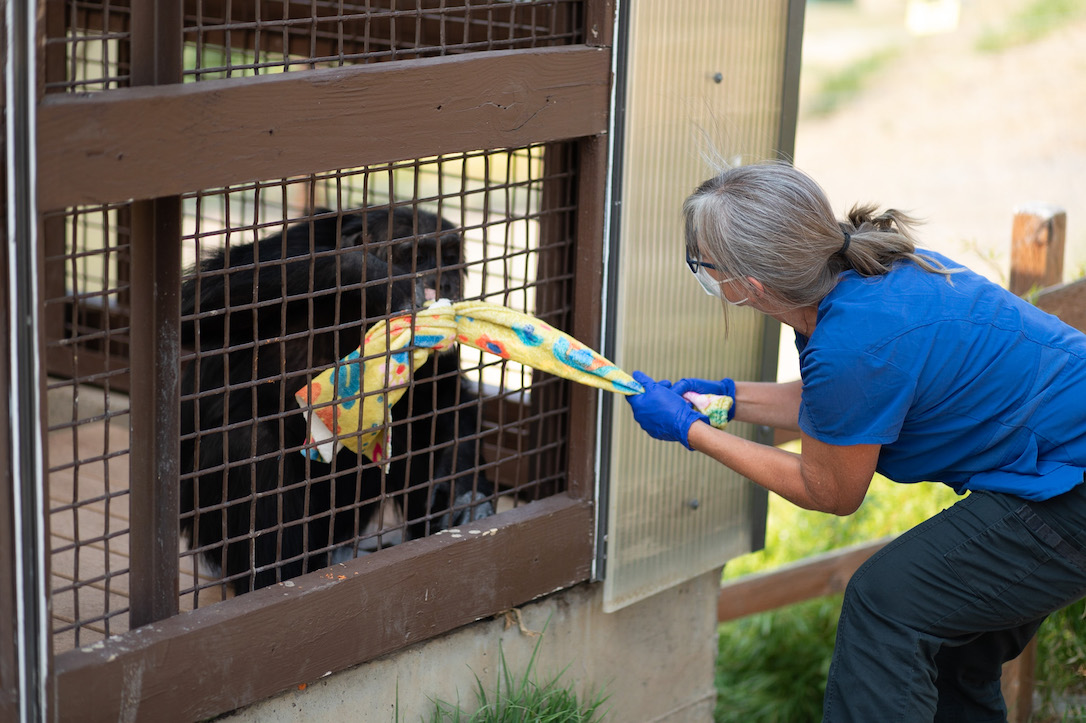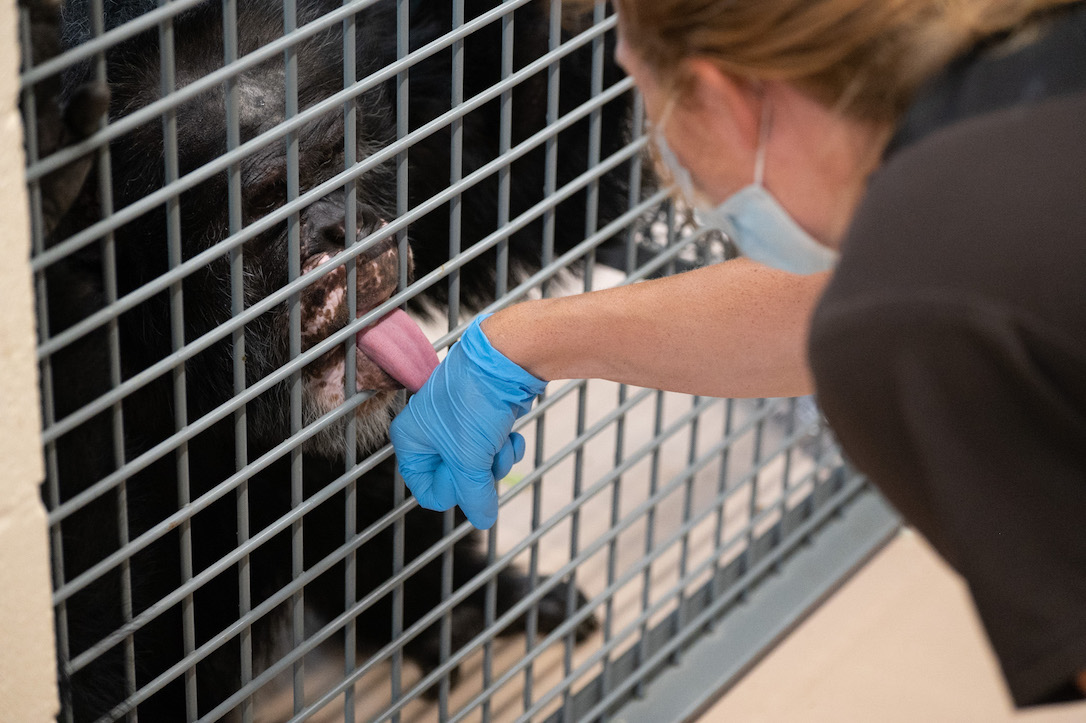Last month, I wrote about how we use verbal communication with the chimps. While I focused on their understanding of the English language, I failed to mention that the chimps who have come from Wildlife Waystation also understand some Spanish! Caregivers at Wildlife Waystation used Spanish frequently around the chimps, so they have some understanding of both languages. CSNW Caregiver, Sofìa, still speaks Spanish to them today, as she mentioned on the blog recently.
Today, I want to discuss a little bit about how we non-verbally communicate with the chimps. I think I could write a blog about this topic for several weeks straight, so I will just be scratching the surface today. If I don’t cover a specific question regarding non-verbal communication, please ask!
Like humans, chimpanzees are experts at reading body language. Have you ever encountered someone and you just know they have had the worst day possible, without them saying a word? The chimps can detect that too. Therefore, it is so important for us caregivers to leave our personal problems or stressors at the door. If we are experiencing conflict in our personal lives, we need to be able to switch that off so the chimps aren’t burdened with our problems. After all, we are in their home and we should try to bring the best energy possible. Even if we are feeling tired and have low energy that day, we attempt to come off neutral or peaceful. As their caregivers, we are apart of their social groups (for the better or the worse) and our attitude is important to their well-being. While they may not exactly be worried if they sense a caregiver is having a bad day (although they may), we need to ensure we are being only a positive or neutral presence in their lives so that we’re not affecting their daily group dynamics. Just like how we want them to all have a happy life, I’d like to think they want us to be happy too.
Just like how the chimps read our body language, that is how we read them as well. Chimpanzee facial expressions can help us gauge how they are feeling. From a play face, to a relaxed face, or a face that shows distress, we can use facial expressions as a clue to how the chimps may be feeling in that moment. Please refer to the “Chimpanzee Facial Expression” chart below for visual pictures. We also are able to tell when a chimpanzee may be worked up, as they will be piloerect- meaning their hair is standing on end. A chimpanzee may be piloerect during an intense situation or when something exciting is occurring.
Burrito piloerect on Young’s Hill
Chimpanzees also use gestures to communicate with each other and caregivers. I found this old video of Foxie asking Jamie for permission to retrieve a nut through head-bobbing (check it out here). And as Grace wrote in an earlier blog, many of our chimps use gestures to ask us for things specific to them (example: Jamie pointing to a specific boot she would like to see us wear). The chimps will point to items they want/need or stare at the item until we catch on. Burrito will use one index finger outside of the caging to indicate he would like to play his favorite game, “Poke a caregivers hand”, paired with a play face or a foot stomp, letting us know that we are about to have a fun, play session. Gordo will give us caregivers one simple look (it’s hard to describe), he will then scratch his torso (letting us know he is about to start to move), and off he goes as that is his way to indicate a game of chase. Cy will stand bipedally at the caging and accompany it with a foot stomp to let us know he is wanting to play chase. Cy also uses a “bronx cheer” (which I talked about in the verbal communication blog) when we aren’t engaging in his game of chase fast enough! Negra uses an “arm-extended” gesture to greet us caregivers in the morning (picture Negra with her arm fully extended while breathy panting from her bed). The list truly goes on and on.
As caregivers, we use species specific behavior while interacting with the chimpanzees. This means that we greet the chimpanzees non-verbally first (through gestures, head nodding, and/or breathy panting), as a chimpanzee would greet another chimpanzee, and then we may use a verbal greeting to follow. When we are playing with the chimps, we will laugh and play like a chimpanzee as appropriate. While we now wear N-95’s around the chimps because of the pandemic, we used to exhibit a chimpanzee play face while engaging in a play session. During meals, we food grunt to let them know that it’s time to eat. We always try to prioritize using appropriate chimpanzee behavior first, then will use verbal communication with them as needed.
Grace serving Cy
Chad playing with Burrito
Anna sitting near Mave
Diana playing with Burrito
JB sitting opposite of Jamie
Katelyn greeting Dora
Jenna playing with Gordo
Sofìa and Gordo
Dr. Erin playing with Burrito
Kelsi receiving Terry’s version of a kiss
